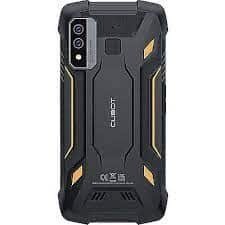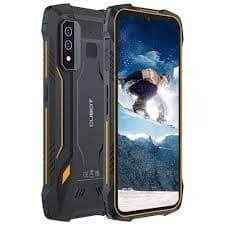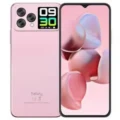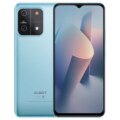Cubot KingKong 6





- : 4GB RAM Unisoc Tiger T310
- : 6.1" 720x1560 pixels
- : 5000mAh
- : 16MP 1080p
Introducing the Cubot KingKong 6: Your Ultimate Adventure Partner
Engineered for Endurance: Say goodbye to worries about drops, dust, or water damage with the Cubot KingKong 6. This rugged phone boasts IP68 and IP69K ratings, ensuring it can handle water, dust, and shocks without a hitch.
Extended Battery Life: Keep exploring without interruption with the KingKong 6’s substantial battery (specific capacity to be confirmed). Whether you’re on a day-long hike or an extended journey, rest assured that your phone will stay powered up.
Powerful LED Torch: Navigate in any condition with confidence thanks to the KingKong 6’s robust LED torch. Whether it’s an emergency situation, a nighttime adventure, or a close-up task, this torch has you covered.
Crystal-Clear Display and Intuitive Operation: Immerse yourself in crisp visuals and seamless navigation on the KingKong 6’s clear display (specific size and resolution to be confirmed). Running on Android (version to be confirmed), the KingKong 6 ensures a user-friendly experience, granting easy access to all your favorite apps and features.
The Cubot KingKong 6 isn’t just a phone—it’s your steadfast companion designed to keep up with your active lifestyle, no matter where your adventures take you.
Want to Learn More?
Furthermore Visit the official website of Cubot for detailed information about the Cubot KingKong 6: Cubot Official Website
Still Unsure?
If you’re still unsure about your choice, explore other options from Cubot at your nearest store: Cubot Store
Specs
Network
| 2G Network GSM 850 / 900 / 1800 / 1900 - SIM 1 & SIM 2 (dual-SIM) CDMA 800 / 1900 |
GSM 850 / 900 / 1800 / 1900 - SIM 1 & SIM 2 |
| 3G Network | HSDPA 900 / 2100 |
| 4G Network | 1, 3, 5, 7, 8, 19, 20 |
| Speed | HSPA, LTE |
LAUNCH
| Announced | November, 2025 |
| Status | Available. Released 2022 |
BODY
| Dimensions | 165.2 x 79 x 13.8 mm (6.50 x 3.11 x 0.54 in) |
| Weight | 261 g (9.21 oz) |
| SIMs SIM (Subscriber Identity Module) is a small card that contains mobile network subscriber's account information. This allows the phone using the card to attach to a mobile network. The SIM card is most commonly associated with GSM and UMTS mobile networks. Moving a SIM card from one phone to another allows a subscriber to switch mobile phones without having to contact their mobile network carrier. SIM cards can also be used by a phone to store limited amounts of data, such as phone numbers and text messages. |
Hybrid Dual SIM (Nano-SIM, dual stand-by) IP68 dust/water resistant (up to 1.5m for 30 min) Drop-to-concrete resistance from up to 1.5m MIL-STD-810G compliant |
Display
| Display Type Display Technology => A number of display technologies and types used in mobile phones => TFT (Thin Film Transistor), IPS (In-Place Switching), OLED (Organic Light Emitting Diode), AMOLED (Active-Matrix Organic Light-Emitting Diode), Super AMOLED (an even advanced version of AMOLED), Resistive Touchscreen (Resistive touchscreens contain two layer of conductive material with a very small gap between them which acts as a resistance), Capacitive Touchsceen (Capacitive touchscreen technology consists of a layer of glass coated with a transparent conductor) | IPS LCD |
| Size | 6.1 inches, 91.3 cm2 (~70.0% screen-to-body ratio) |
| Resolution | 720 x 1560 pixels, 19.5:9 ratio (~282 ppi density) |
PLATFORM
| Operating System OS => Every computer system run on a base software called Operating System (OS). Operating System controls all basic operations of the computer (such as smartphone, PDAs, tablet computers and other handheld devices). The Operating System allows the user to install and run third party applications (apps), apps are used to add new functionality to the device. | Android 11 |
| Chipset Chipset is a group of integrated circuits designed to perform one or a more dedicated functions, often with real time computing constraints, Popular smartphones are equipped with more advanced embedded chipsets that can do many different tasks depending on their programming. | Unisoc Tiger T310 (12nm) |
| CPU CPU (Central Processing Unit) mostly known as processors, CPU processes instructions in order to carry out certain functions that make your device operate properly. Processors are often described as the brain of computers, smartphones and tablets, Smartphones and tablets rely on processors to carry out their every task, Processors are an incredibly important factor in selecting any type of computing device, including your smartphone. | Quad-core (1x2.0 GHz Cortex-A75 & 3x1.8 GHz Cortex-A55) |
| GPU GPU (Graphics Processing Unit) is a single-chip processor designed to rapidly manipulate and alter memory to accelerate the creation of images in a frame buffer intended for output to a display, This includes things such as lighting effects, object transformations, and 3D motion. | PowerVR GE8300 |
MEMORY
| Card Slot Memory Card Slot is a special slot for inserting a memory card. Memory cards allow you to expand the phone's built-in memory, A memory card (sometimes called a flash memory card or a storage card) is a small storage medium used to store data such as text, pictures, audio, and video, for use on small, portable or remote computing devices such as mobile phones, mp3 players, digital cameras. | microSDXC (uses shared SIM slot) |
| Internal | 64GB 4GB RAM |
MAIN CAMERA
| Cameras Specs Today’s smartphones come equipped with a very comprehensive set of camera related specifications. Our smartphone, for many of us, has become our primary camera due to it being the one we always have with us. |
16 MP, (wide), AF 0.3 MP |
| Video | Yes |
| Camera Features | LED flash |
SELFIE CAMERA
| Cameras Specs Today’s smartphones come equipped with a very comprehensive set of camera related specifications. Our smartphone, for many of us, has become our primary camera due to it being the one we always have with us. |
8 MP |
| Video | Yes |
SOUND
| Loudspeaker | Yes |
| 3.5mm jack |
Unspecified |
COMMS
| WLAN |
Wi-Fi 802.11 a/b/g/n/ac |
| Positioning |
GPS, GLONASS, GALILEO |
| Bluetooth Bluetooth is a wireless communications technology for exchanging data between mobile phones, headsets, computers and other network devices over short distances without wires, Bluetooth technology was primarily designed to support simple wireless networking of personal consumer devices. | 5.0, A2DP, LE |
| Infrared Infrared connectivity is an old wireless technology used to connect two electronic devices. It uses a beam of infrared light to transmit information and so requires direct line of sight and operates only at close range. | |
| USB | USB Type-C, OTG |
| NFC NFC (Near field communication) is a set of standards for smartphones and similar devices to establish peer-to-peer radio communications with each other by touching them together or bringing them into proximity, usually no more than a few inches. | |
| Radio |
Features
| Sensors Sensors are electronic components that detects and responds to some type of input from the physical environment. The specific input could be light, heat, motion, moisture, pressure and location, The output is generally a signal that is converted to use in computing systems, a location sensor, such as a GPS receiver is able to detect current location of your electronic device. |
Fingerprint (rear-mounted), accelerometer, gyro, proximity, compass |
BATTERY
| Battery Type Battery Type => Cell phones run on various kinds of batteries depending on the manufacturer, phone size or shape and features. There are basically four types of cell phone batteries => Lithium Polymer, Lithium Ion, Nickel Metal Hydride and Nickel Cadmium. | Li-Ion (Lithium Ion) |
MISC
| Colors |
Black/Orange |
TESTS
Reviews
Disclaimer Note
We strive to maintain accurate and up-to-date content on our website for general information purposes only. Please refrain from using the material for business, legal, or any other decisions.



















